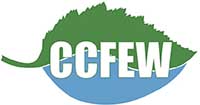 |
|
Citizens Concerned About the Future of the Etobicoke Waterfront |
|
|
|
|
||||||||||||||||
|
|
|
|
||||||||||||||||||||
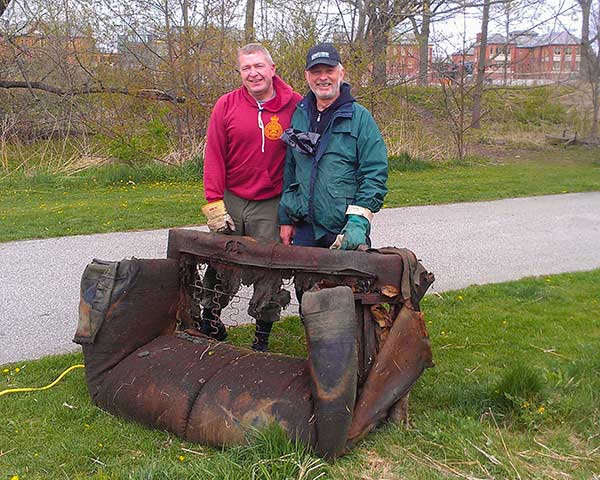 |
|
Alan and Terry with the prize. |
|||
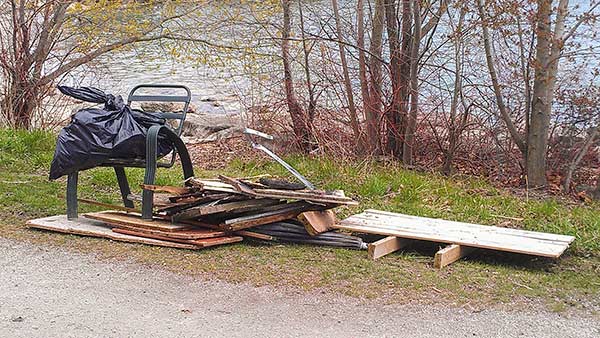 |
|||
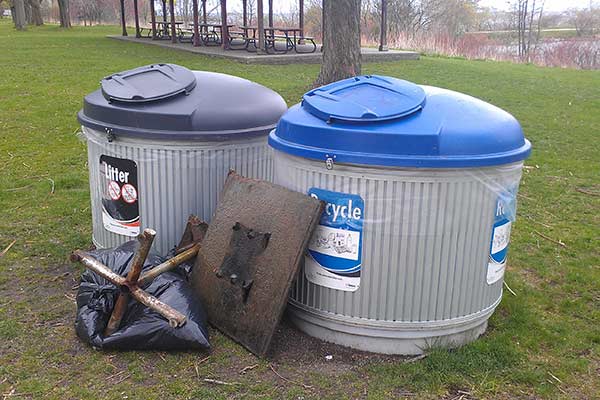 |
|||
|
CCFEW Offers Funding For Nature Education Programming at Colonel Samuel Smith Park We have long believed that Colonel Samuel Smith Park offered a unique opportunity for nature education programming in the city. We had trouble generating interest in the idea, but finally found a willing partner in the Humber Arboretum. We made two unsuccessful attempts to secure Trillium funding to kick-start the program. We have made a more modest application to another funder this year to provide a subsidy for up to 900 students. At our Annual General Meeting last month, we decided to offer some of our own money to stimulate interest in the programs while we wait for a decision on the grant application . Here are the details: To encourage participation in these new outdoor education programs, CCFEW is offering to subsidize the first 5 classes of students who register for these programs (one class per school, with up to 30 students per class). The regular price of these programs is $11.50/student/full day, plus GST. Humber Arboretum is offering a $1/student/full day subsidy if you travel by TTC or walk. CCFEW is offering an additional subsidy of $5/student/full day for the first 5 classes who register (one class per school). This would bring the cost down to $5.50/student, which is a great introductory offer! To register for one of these programs, contact the Humber Arboretum at 416-675-5009, or go on their website at www.humberarboretum.on.ca Humber is offering 15 different programs addressing 7 different curriculum connections. Click here for the full list. |
||
|
“Windows on the Lake” Need Protection There are numerous places along the Etobicoke lakeshore where there is a small parkette where roads end at the lake. We have all seen and enjoyed these “windows to the lake”, but most people don’t realize that these are not parks. They are actually road allowances, and don’t enjoy the same protection as city parks. Some of these spaces are doing just fine, but others are beginning to resemble private property. We have decided that it’s time to speak up for their protection. We have started the discussion with a letter to the department responsible for the road allowances, Transportion Services. Here’s an excerpt from that letter: We are asking for your assistance with respect to the expanding encroachments on city land at the waterfront in Etobicoke to ensure more equitable access for all residents. Effecting change will be a long process, involving several different city departments. We think it’s worth the effort! |
||
|
CCFEW’s Comments on the South Etobicoke Stormwater Management EA Here’s the text of our official submission on the stormwater management EA: CCFEW has participated in the Etobicoke Waterfront Stormwater Management Facilities Study as part of the Community Working Group since its inception in 2009 and before that, in the development of the Wet Weather Flow Master Plan. While we fully support the goals of the plan and are prepared to accept the “big pipe” as the preferred option, we are dismayed by the lack of creative solutions to enhance the community as a result of this project. This is a major infrastructure project, and it presents an opportunity to enhance the waterfront as an indirect result of the stormwater management activities. The most significant missed opportunity in this plan is in the discharge of water from the central storage shaft. We urge you to consider trickling the discharge into North Creek where it emerges from a pipe near the first bend in Colonel Samuel Smith Park Drive. This would help restore base flow to the creek which lost most of its volume following the construction of Father John Redmond Catholic Secondary School, and help restore the ecological integrity of the downstream wetlands and pond. We recognize that there will be instances where the storage shaft must be discharged at a faster rate than North Creek can accommodate. In those instances, we support using the existing stormwater pond adjacent to the storage tank. We further urge that the discharge from the stormwater pond be modified so that it appears less like a waterfall to migrating salmon. This would help reduce the number of salmon trapped in the pond during spawning season. If the large detention tank is placed in Colonel Samuel Smith Park, we urge you to establish the service access through the RL Clark Filtration Plant rather than the park road as this will result in less disturbance to the park and its users. We also urge you to consider daylighting the portion of Jackson Creek that runs through the swale at the north-eastern part of Colonel Samuel Smith Park. This provides an opportunity to slow the flow, reducing the amount of water that will need to be diverted downstream. It will also provide a welcome community benefit to help compensate for the disruption and inconvenience the community will suffer during the construction of the diversion sewers and underground storage shaft. We believe that a portion of the money spent on the implementation of the stormwater management plan should be put towards this type of “green” infrastructure. It was the “out of sight, out of mind” attitude toward stormwater that created the problem we are now trying to fix. We need to ensure this solution does not help perpetuate that mindset. The Environmental Assessment should include such a “green” infrastructure plan for the whole study area, along with a commitment to implement it. We welcome the opportunity to meet with staff to help develop and implement these ideas. |
||
|
February 6, 2012 South Etobicoke Stormwater Management EA Impressions Last Thursday, the public finally got a look at the “preferred alternative” for stormwater management. It wasn’t too surprising for members of the Community Working Group (CWG), since it’s pretty much what we saw more than a year ago. Despite disappointments with the lack of creative enhancements, the basic plan presented is actually not too bad. The very clear message from the CWG in December 2010 was, “After $120,000,000 of torn-up roads and parks, give us something tangible to look forward to.” That message went unheeded, but the door still appears to be open. CCFEW will be submitting formal comments next week. The presentations, display boards and background materials are available on the City’s Project Page. It’s worth looking at the display boards from the first meeting to help understand how we ended up at the “preferred alternative” in the second meeting. |
||
|
South Etobicoke Stormwater Management EA What is it? Back in 2009, the City of Toronto initiated a Municipal Class Environmental Assessment (EA) study to assess the consolidation of approximately thirty (30) stormwater outfalls within the Etobicoke Waterfront Drainage Area that discharge stormwater directly to Lake Ontario and to improve water quality by implementing stormwater management facilities.
The first public meeting of the EA process was held in November 2009, and we haven’t heard very much since. This is a very worthwhile project, but it will be very costly, and potentially very disruptive. The extent and duration of the disruption will depend on which stormwater management options are chosen. Some involve the construction of large sewer mains, including Lake Shore Blvd through most of Mimico. Others involve large stormwater detention facilities. These could be open ponds similar to the flow balancing facility at Humber Bay East, or underground storage tanks. Sam Smith Park plays a prominent role in most scenarios. We wrote about it, including our suggestions and concerns, on the website in January 2010. We wrote about it in our April 2010 Newsletter, and again in our April 2011 Newsletter. CCFEW has been part of a Community Working Group (CWG) through the EA process. The working group hasn’t met since December 2010, but at that time we weren’t too impressed with what we saw. It looked like millions of dollars and lots of disturbance with very little to show for it in the end. The resulting water quality improvements will be real, but not very tangible. We urged the consultants to give us something to look forward to after all the inconvenience we will suffer. This paragraph was included in the letter sent to the CWG members this week: The Study Team has also considered suggestions of the Working Group for environmental enhancements and naturalized facilities in the Park, and that there should be minimal disturbance to the local community, existing natural and recreational areas, as well as park functions. I can assure you that during detailed design of the project, we will explore environmental enhancement and naturalization opportunities in Samuel Smith Park (e.g. for North Creek and the sediment embayment), in consultation with the local community, the Toronto and Region Conservation Authority, and internal City divisions. How to get involved. Next week, we’ll see the final recommendations. The public Consultation meeting is: Thursday, February 2, 2012 |
|||
|
New for 2012, We are now able to process memberships & membership renewals on line! You can still do it by mail, but now we have an on line option using a secure PayPal site. Memberships run on a calendar year basis. The cost is $10 for individuals, $15 for families. Your membership helps give us credibility when we advocate on behalf of the waterfront, and your membership fee helps cover our costs of operation. |
|||
|
November 25, 2011 Mimico 2020 Update: There will be a Community Meeting next Wednesday to discuss the Mimico 2020 plan. Although no agenda is available, we have word that Urban Strategies will provide a project update and will be conducting an open Q&A period. No final conclusions or recommendations are to come from this meeting, so presumably, this will not be the last chance for public input before the final report goes to council. It will however be a very important opportunity for the public to ask questions and voice concerns. Check our Activities page for more information. |
|
This raises traffic concerns for local residents, but from CCFEW’s perspective, the concern is possibly reducing further the view corridor to the lake, and potential pressure to add an entrance to the east through the orchard. It’s interesting to note that this illustration doesn’t show any roadway large enough to carry traffic to and from a large parking garage. In the ongoing stormwater management study, we had been promoting the idea of placing a large stormwater detention tank under the Humber College parking lot rather than where it appears likely to go: in Sam Smith Park. This plan would make that impossible. We would also like to see a portion of the buried creek daylighted, but they haven’t left much room for that. |
||
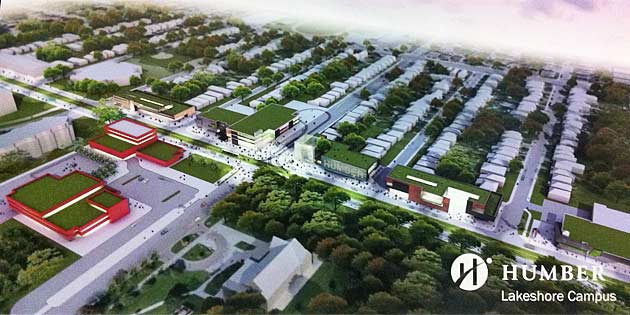 |
||
|
This view shows their concept at Kipling & Lake Shore from the south-east. Existing buildings are white. The one in the foreground is the Assembly Hall. Across the street from that is the planned Catholic elementary school. North of that, along Lake Shore Blvd is Humber’s planned Welcome Centre. Our biggest concern with that is it’s on City property that is supposed to be open space according to the Lakeshore Grounds Master Plan. Every other planned or existing building conforms to that open space set back. |
||||
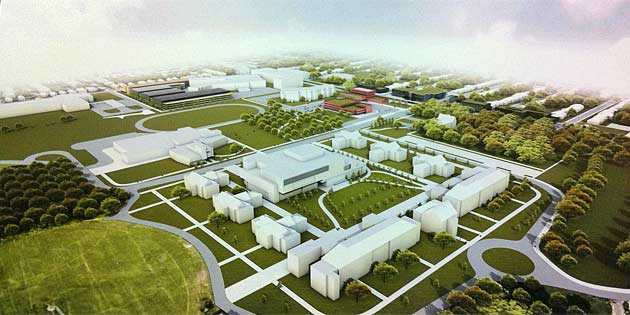 |
||||
|
This view shows the whole campus with planned buildings in colour and existing ones in white. It was encouraging to note that in the final phase of restoring building “G” (east side of the quad at the traffic circle), they still plan to restore the original tower on the front of the building. These plans are all still conceptual, but clearly they are well advanced in their plans. For more on the meeting, you can read coverage in the Etobicoke Guardian. |
||||
|
November 23, 2011 I received this presentation as a PowerPoint earlier this week: Click here or on the image above to open it as a (large) pdf file in a new window. You can use your arrow keys to move through the presentation. I searched to see if it was already out there somewhere on line, but couldn’t find it. It deserves to be posted somewhere, so now it is! |
||||